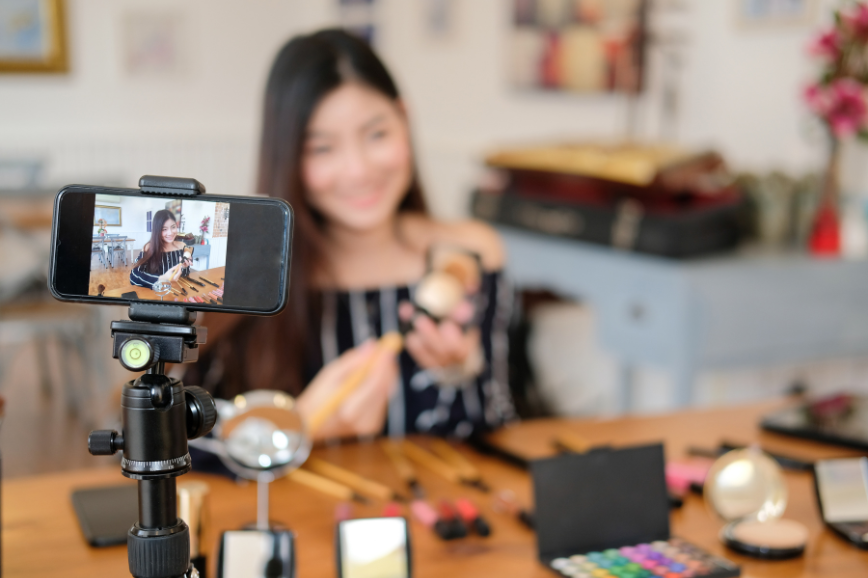How to Build a Winning Back-to-School Marketing Strategy

Back-to-school isn’t just another chance to sell products. It’s a massive billion-dollar chance! If you play it smart, it can pay off. Think of it like a mini Black Friday, but with more pencils and less trampling.
People spend a ton during back-to-school season, second only to the Holiday season. Everyone knows this, which means your rivals are ready to fight for sales, ad costs go way up, and parents are bombarded with ads.
How do you even get seen at all? Plan ahead, be smart, and get going. NOW.
Why You Shouldn’t Skip Back-to-School Season
Think about it: families suddenly realize their kids need everything, from notebooks to devices, all at once. It’s chaotic and has a deadline.
Parents stop browsing and start hunting for specific items. College kids are suddenly short-term spenders. Teachers look for deals on class supplies. Your standard performance marketing tactics won’t be effective. You need focused ideas that are explicitly tailored to this time of year, meeting their needs.
The tough part? Everyone wants attention. Ads cost more, and it’s harder to get noticed without paying. If you wait until the end of summer, you’ll pay a lot more for less attention.
The best approach is to start early, plan thoroughly, and do things correctly. Here are a few things you can do to convert your back-to-school marketing into huge sales:
Tip 1: Plan Early and Ground Your Strategy in Data
Your old campaigns can show you what works. You just have to look closely.
Look back at what you did last year. What ads got the most sales? What did people respond to? When were people the most interested? Don’t just look at the main points, dig into why things succeeded or failed. Every little thing matters!
Your information is only part of it. Your rivals also ran campaigns, and you can learn from what they did, too. Check out their ads, offers, and where they advertised. What did they do that you missed? What failed for them that you can learn from?
See what people are looking for online right now. Google Trends, ChatGPT and other social media tools can reveal what people are currently interested in. Are parents worried about costs? Are college students interested in being sustainable? Is there a new trend you can jump on?
This data isn’t just extra, it’s crucial. Every decision you make should come from this research.
Tip 2: Know Your Audience—and How the Season Impacts Them
Knowing who people are is not enough. Knowing how they feel during back-to-school is essential.
Your target audience isn’t just parents and students. There are different people, and they have varying reasons for making a purchase. Parents of younger kids plan carefully and hunt for the best deals. College students often wait until the last second and then rush to buy everything. Teachers often spend their own money to enhance their classes.
This time of year changes how people act. Parents who usually save money might spend more on things that make their kids happy. College students work part-time jobs to earn money for laptops or clothes. Teachers try to stretch their limited funds.
How they use devices also changes! Parents may browse using a computer, but make purchases on their phones. Meanwhile, college students are heavy mobile users, so they might compare prices on their laptops. Knowing this helps you show them the right info on the right device, at the right time.
Some products excel during back-to-school season, while others struggle. Clothing might see a sales boom, while the latest devices are super popular. Meal kits can be great for busy parents and college kids, too. Fancy brands or other services might drop sales as families spend their money on school needs.
The key is to match your ads to what people are feeling and what they need. Parents want to set their kids up for success, students want to showcase who they are, and teachers want to improve their classrooms for better learning experiences.
Tip 3: Build a Full-Funnel Strategy That Converts
The best back-to-school ads are guides that take people from just learning about you to recommending you.
Your funnel needs to match where people are. When they’re becoming aware, capture their attention with ads that are on-trend and match the platform. Try creating TikTok videos that showcase your products and share UGC-style photos on Instagram to let students envision themselves with your gear.
When people are thinking about buying from you, change your focus. Now they want proof that your product is good. User and influencer content can work great here. Show real students wearing your clothes, parents recommending your product, or teachers using your supplies. Helpful guides can help them compare product and brand options.
When it’s time to buy, create some excitement. Limited-time sales, countdowns, ads that target people who looked at items – these all scream, ‘Buy now or lose out!’ But make it helpful, not aggressive.
The places you advertise should match your crowd and goals. TikTok, Instagram, and Snapchat are suitable for younger people. Emails are effective for sales and follow-ups with customers. Search ads want people who want something right away. Don’t advertise everywhere. Focus on where your audience actually is.
It gets better when these things work seamlessly together. A TikTok video can get attention and drive traffic to your site. A website pop-up can convert users into subscribers, and targeted ads can encourage them to return and make a purchase.
Tip 4: Make Content That Connects—UGC and Emotion Win
When regular ads are everywhere, being real really matters.
User-generated content is key here. When young people see real students wearing your brand or parents saying good things about your product, it has the same effect as recommendations from friends.
Your ads should align with the sentiments of the back-to-school season. For parents, that’s often ‘happy sadness’. They are excited to see their kids growing and moving forward. For students, it’s nerves about meeting new people.
Make sales, but make them real. Limited-time offers work when there is a genuine reason.
The best back-to-school ads match big dreams with real life. Show the awesome dorm room, but also the mess of moving in, and feature the backpack alongside the reality of stuffing everything in at the last second.
Tip 5: Nail Your Promo Strategy and Optimize Relentlessly
Your sales should resemble a personal service, tailored specifically to each group.
Families like deals that make shopping easier and save money. Teachers want special discounts. Students opt for sales that seem significant and can share with their friends.
Timing the sales is essential. Start with teasers that create excitement, then offer unbeatable deals, and finish with last-chance offers for those ready to buy. This benefits both those who buy early and those who buy at the last minute.
However, sales without good information can be big trouble. Monitor how each ad is performing. Which offers do the best? What ads get the most attention? When do people respond best?
A/B testing is essential. Test ads and headlines. Do UGC images get more sales than stock photos? All tests produce data that improves future ads.
If your ads and sales don’t align correctly, everything falls apart. Ensure that everything works smoothly and that data is transferred seamlessly between platforms.
How GeistM Can Help
You can put together a brilliant back-to-school plan yourself, or you can reach out to the team of experts who have done it before: GeistM.
We’ve helped hundreds of brands turn their back-to-school ads into cash cows. Our track record speaks for itself.
What makes us unique? We start early. We’re already digging into data, checking out rivals, and learning about your people. By the time back-to-school shopping starts, your ads aren’t just ready, they’re planned for the best results.
Our in-house marketing team makes us who we are. Our writers make ads that get sales because they know what makes people buy during back-to-school. Our team creates authentic content that people trust.
But most importantly, we stay with you. Back-to-school marketing isn’t set-it-and-forget-it – it’s wild and needs constant care. When TikTok trends change, we switch up your ads. When rivals change their deals, we change yours.
The brands that win at back-to-school aren’t those with the biggest budgets – they’re the ones with the smartest helpers. They’re the brands that understand that it takes more than good intentions to make it work. It takes innovative thinking, perfect execution, and a constant drive to improve.
Your rivals are already planning. Every day you wait is a day they get ahead. But here’s your chance: you found us. And we’re ready to make this your best back-to-school ever.
Ready to win this back-to-school season? Let’s talk. Contact us today.











